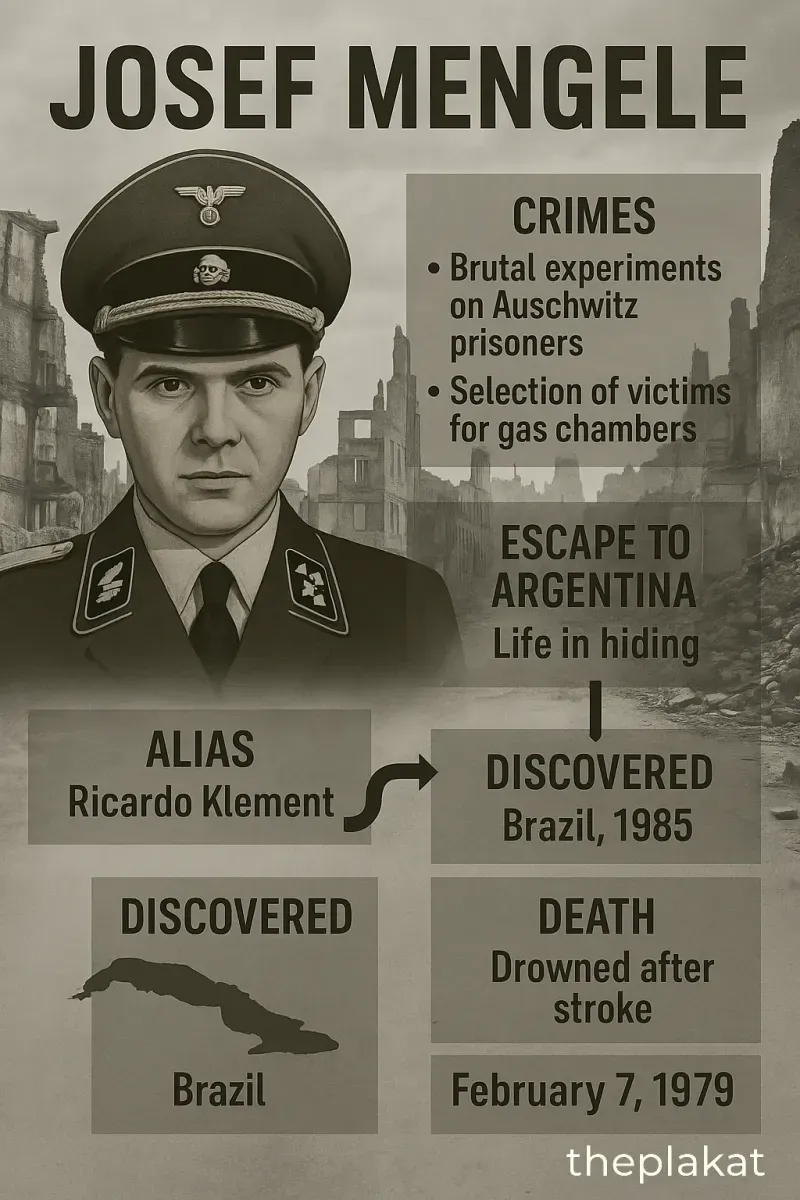Published
in Chronicles
Josef Mengele, known as the 'Angel of Death,' was one of the most notorious Nazi war criminals. His gruesome experiments on Auschwitz prisoners and later life in hiding paint a chilling portrait of impunity and delayed justice.
Josef Mengele was a German SS officer and physician infamous for his horrific experiments at Auschwitz. He conducted pseudo-scientific research on twins, dwarfs, and individuals with genetic anomalies. Victims were subjected to forced sterilizations, unnecessary amputations, exposure to extreme temperatures, and injections with lethal substances. Mengele played a central role in the selection process at the camp, determining who would be sent to forced labor and who to the gas chambers.
As the Allies closed in on Nazi Germany, Mengele fled to South America in 1949 using a Red Cross-issued passport under the alias 'Helmut Gregor.' He settled in Argentina, where he lived quietly while working in various agricultural roles. He later moved to Paraguay and then Brazil, continuing to use false identities such as Ricardo Klement and Peter Hochbichler.
Throughout the 1950s to the 1970s, Mengele remained hidden with the help of Nazi sympathizers. He reportedly worked on farms, received financial assistance from former SS members, and moved between rural towns. Although Israel, West Germany, and other nations issued arrest warrants and launched global manhunts, Mengele evaded capture by frequently changing locations and identities.
Josef Mengele died on February 7, 1979, in Bertioga, Brazil, after suffering a stroke while swimming. He was buried under the name 'Wolfgang Gerhard.' In 1985, his remains were exhumed, and DNA testing in the 1990s confirmed his identity. His crimes, however, went unpunished in his lifetime, leading to significant public and academic criticism of postwar justice mechanisms.
Mengele's legacy serves as a grim reminder of the atrocities committed during the Holocaust and the gaps in international justice. He remains a symbol of the horrors of medical abuse under totalitarian regimes and the challenges of prosecuting crimes against humanity decades after they occur.

Josef Mengele was a Nazi SS officer and physician who conducted inhumane experiments on prisoners at Auschwitz during the Holocaust.
He carried out brutal experiments on twins, amputations without anesthesia, and selected prisoners for gas chambers.
After World War II, he fled to South America using a false identity and lived in Argentina, Paraguay, and Brazil until his death.
He died on February 7, 1979, in Brazil after suffering a stroke while swimming. His identity was confirmed in 1985.